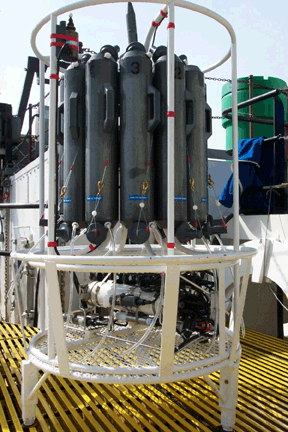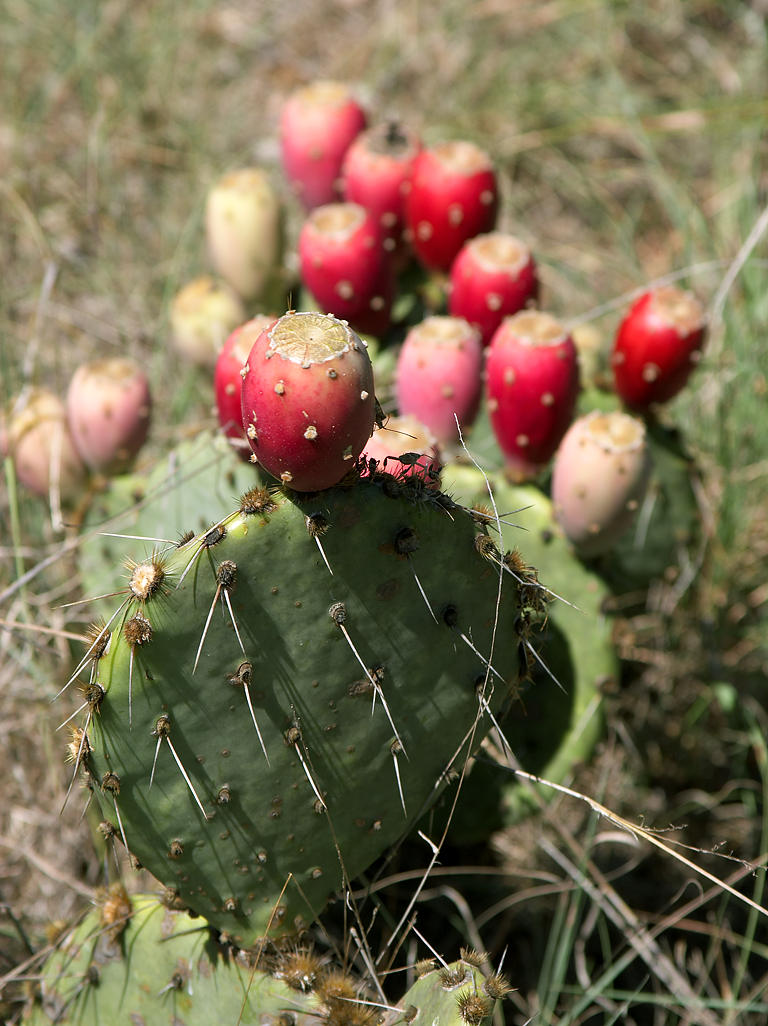|
Earthplace
Earthplace is a non-profit science education organization, in Westport, Connecticut in the United States. Its main focus is on the natural world and sustainability. Features NaturePlace: A museum room that features interactive nature displays, hands-on activities and a video theater. Five wildlife dioramas depict Connecticut's animals and plants found in various seasons and ecosystems. Animal Hall: Earthplace houses a collection of rescued wildlife that are exhibited as species ambassadors, including bald eagles, hawks, turkey vultures, a black vulture, several types of owls, a box and wood turtle, little brown bats, and more. Due to their injuries, these animals cannot be released back into the wild. Several domestic animals are used in public programs, including rabbits, ferrets, guinea pigs, and Madagascar hissing cockroaches. Hiking Trails: Earthplace maintains a sanctuary, which is the largest open-space in Westport. Trails cross areas of wetlands, ponds, streams, hardwo ... [...More Info...] [...Related Items...] OR: [Wikipedia] [Google] [Baidu] |
Westport, Connecticut
Westport is a town in Fairfield County, Connecticut, United States, along the Long Island Sound within Connecticut's Gold Coast. It is northeast of New York City. The town had a population of 27,141 according to the 2020 U.S. Census. History The earliest known inhabitants of the Westport area as identified through archaeological finds date back 7,500 years. Records from the first white settlers report the Pequot Indians living in the area which they called ''Machamux'' translated by the colonialists as ''beautiful land''. Settlement by colonialists dates back to the five '' Bankside Farmers''; whose families grew and prospered into a community that continued expanding. The settlers arrived in 1693, having followed cattle to the isolated area. The community had its own ecclesiastical society, supported by independent civil and religious elements, enabling it to be independent from the Town of Fairfield. As the settlement expanded its name changed: it was briefly known as "Ba ... [...More Info...] [...Related Items...] OR: [Wikipedia] [Google] [Baidu] |
Anna Hyatt Huntington
Anna Vaughn Hyatt Huntington (March 10, 1876 – October 4, 1973) was an American sculptor who was among New York City's most prominent sculptors in the early 20th century. At a time when very few women were successful artists, she had a thriving career. Hyatt Huntington exhibited often, traveled widely, received critical acclaim at home and abroad, and won multiple awards and commissions. During the first two decades of the 20th century, Hyatt Huntington became famous for her animal sculptures, which combine vivid emotional depth with skillful realism. In 1915, she created the first public monument by a woman to be erected in New York City. Her ''Joan of Arc'', located on Riverside Drive at 93rd Street, is the city's first monument dedicated to a historical woman.From a statement by The Miriam and Ira D. Wallach Art Gallery of Columbia University, dated February 12, 2014. Biography Huntington was born in Cambridge, Massachusetts, on March 10, 1876. She was the daughter of Aud ... [...More Info...] [...Related Items...] OR: [Wikipedia] [Google] [Baidu] |
American Bullfrog
The American bullfrog (''Lithobates catesbeianus''), often simply known as the bullfrog in Canada and the United States, is a large true frog native to eastern North America. It typically inhabits large permanent water bodies such as swamps, ponds, and lakes. Bullfrogs can also be found in man made habitats such as pools, koi ponds, canals, ditches and culverts. The bullfrog gets its name from the sound the male makes during the breeding season, which sounds similar to a bull bellowing. The bullfrog is large and is commonly eaten throughout its range, especially in the southern United States where they are plentiful. Their presence as a food source has led to bullfrogs being distributed around the world outside of their native range. Bullfrogs have been introduced into the Western United States, South America, Western Europe, China, Japan, and southeast Asia. In these places they are invasive species due to their voracious appetite and the large number of eggs they produc ... [...More Info...] [...Related Items...] OR: [Wikipedia] [Google] [Baidu] |
Benthic
The benthic zone is the ecological region at the lowest level of a body of water such as an ocean, lake, or stream, including the sediment surface and some sub-surface layers. The name comes from ancient Greek, βένθος (bénthos), meaning "the depths." Organisms living in this zone are called benthos and include microorganisms (e.g., bacteria and fungi) as well as larger invertebrates, such as crustaceans and polychaetes. Organisms here generally live in close relationship with the substrate and many are permanently attached to the bottom. The benthic boundary layer, which includes the bottom layer of water and the uppermost layer of sediment directly influenced by the overlying water, is an integral part of the benthic zone, as it greatly influences the biological activity that takes place there. Examples of contact soil layers include sand bottoms, rocky outcrops, coral, and bay mud. Description Oceans The benthic region of the ocean begins at the shore line (intertida ... [...More Info...] [...Related Items...] OR: [Wikipedia] [Google] [Baidu] |
Water Quality
Water quality refers to the chemical, physical, and biological characteristics of water based on the standards of its usage. It is most frequently used by reference to a set of standards against which compliance, generally achieved through treatment of the water, can be assessed. The most common standards used to monitor and assess water quality convey the health of ecosystems, safety of human contact, extend of water pollution and condition of drinking water. Water quality has a significant impact on water supply and oftentimes determines supply options. Categories The parameters for water quality are determined by the intended use. Work in the area of water quality tends to be focused on water that is treated for potability, industrial/domestic use, or restoration (of an environment/ecosystem, generally for health of human/aquatic life). Human consumption Contaminants that may be in untreated water include microorganisms such as viruses, protozoa and bacteria ... [...More Info...] [...Related Items...] OR: [Wikipedia] [Google] [Baidu] |
Prickly Pear Cactus
''Opuntia'', commonly called prickly pear or pear cactus, is a genus of flowering plants in the cactus family Cactaceae. Prickly pears are also known as ''tuna'' (fruit), ''sabra'', ''nopal'' (paddle, plural ''nopales'') from the Nahuatl word for the pads, or nostle, from the Nahuatl word for the fruit; or paddle cactus. The genus is named for the Ancient Greek city of Opus, where, according to Theophrastus, an edible plant grew and could be propagated by rooting its leaves. The most common culinary species is the Indian fig opuntia (''O. ficus-indica''). Description ''O. ficus-indica'' is a large, trunk-forming, segmented cactus that may grow to with a crown of over in diameter and a trunk diameter of . Cladodes (large pads) are green to blue-green, bearing few spines up to or may be spineless. Prickly pears typically grow with flat, rounded cladodes (also called platyclades) containing large, smooth, fixed spines and small, hairlike prickles called glochids tha ... [...More Info...] [...Related Items...] OR: [Wikipedia] [Google] [Baidu] |
Lady's Slipper
Cypripedioideae is a subfamily of orchids commonly known as lady's slipper orchids, lady slipper orchids or slipper orchids. Cypripedioideae includes the genera ''Cypripedium, Mexipedium, Paphiopedilum, Phragmipedium'' and '' Selenipedium''. They are characterised by the slipper-shaped pouches (modified labella) of the flowers – the pouch traps insects so they are forced to climb up past the staminode, behind which they collect or deposit pollinia, thus fertilizing the flower. There are approximately 165 species in the subfamily. Description All representatives of the Cypripedioideae are perennial, herbaceous plants. The fleshy roots sometimes possess a veil. The leaves are arranged spirally or in two rows, the shoot is slender or compressed. In the bud, the leaves are rolled and the leaf blade is plikat (folded) or the leaves are folded in the bud, smooth and leathery. There is no dividing tissue between leaf and shoot. The inflorescence of the Cypripedioideae are ter ... [...More Info...] [...Related Items...] OR: [Wikipedia] [Google] [Baidu] |
Maianthemum
''Maianthemum'' includes the former genus ''Smilacina'' and is a genus of perennial herbaceous flowering plants with fleshy, persistent rhizomes. It is widespread across much of North America, Europe and Asia, and may be terrestrial, aquatic or epiphytic. It is characterized by simple, unbranched stems that are upright, leaning or hanging down and have 2–17 foliage leaves. Leaves are simple and may clasp the stem or be short- petiolate. The inflorescence is terminal and either a panicle or a raceme with few to many pedicelate flowers. Most species have 6 tepals and 6 stamens; a few have parts in 4s. Tepals are distinct in most species and all of similar size. Flowers are spreading, cup-shaped or bell-shaped and usually white, but lavender to red or green in some species. Fruits are rounded to lobed berries containing few to several seeds. Vegetative ; Rhizomes and roots Rhizomes are persistent and have scale leaves. They can be sympodial; spreading and thread-like, or cyli ... [...More Info...] [...Related Items...] OR: [Wikipedia] [Google] [Baidu] |
Arisaema Triphyllum
''Arisaema triphyllum'', the jack-in-the-pulpit, bog onion, brown dragon or Indian turnip, is a herbaceous perennial plant growing from a corm. It is a highly variable species typically growing in height with three-part leaves and flowers contained in a spadix that is covered by a hood. It is native to eastern North America, occurring in moist woodlands and thickets from Nova Scotia west to Minnesota, and south to southern Florida and Texas. Description The leaves are trifoliate, with groups of three leaves growing together at the top of one long stem produced from a corm; each leaflet is long and broad. Plants are sometimes confused with poison-ivy especially before the flowers appear or non-flowering plants. The inflorescences are shaped irregularly and grow to a length of up to 8 cm. They are greenish-yellow or sometimes fully green with purple or brownish stripes. The spathe, known in this plant as "the pulpit" wraps around and covers over and contain a ... [...More Info...] [...Related Items...] OR: [Wikipedia] [Google] [Baidu] |
Trillium
''Trillium'' (trillium, wakerobin, toadshade, tri flower, birthroot, birthwort, and sometimes "wood lily") is a genus of about fifty flowering plant species in the family Melanthiaceae. ''Trillium'' species are native to temperate regions of North America and Asia, with the greatest diversity of species found in the southern Appalachian Mountains in the southeastern United States. Description Plants of this genus are perennial herbs growing from rhizomes. There are three large leaf-like bracts arranged in a whorl about a scape that rises directly from the rhizome. There are no true aboveground leaves but sometimes there are scale-like leaves on the underground rhizome. The bracts are photosynthetic and are sometimes called leaves. The inflorescence is a single flower with three green or reddish sepals and three petals in shades of red, purple, pink, white, yellow, or green. At the center of the flower there are six stamens and three stigmas borne on a very short style, if ... [...More Info...] [...Related Items...] OR: [Wikipedia] [Google] [Baidu] |
Bloodroot
''Sanguinaria canadensis'', bloodroot, is a perennial, herbaceous flowering plant native to eastern North America. It is the only species in the genus ''Sanguinaria'', included in the poppy family Papaveraceae, and is most closely related to '' Eomecon'' of eastern Asia. ''Sanguinaria canadensis'' is sometimes known as Canada puccoon, bloodwort, redroot, red puccoon, and black paste. Plants are variable in leaf and flower shape, and have been separated as a different subspecies due to these variable shapes, indicating a highly variable species. In bloodroot, the juice is red and poisonous. Products made from sanguinaria extracts, such as black salve, are escharotic and can cause permanent disfiguring scarring. Although preliminary studies have suggested that sanguinaria may have potential applications in cancer therapy, clinical studies are lacking, and its use is not recommended. Description Bloodroot grows from tall. It has one large basal leaf, up to across, with fiv ... [...More Info...] [...Related Items...] OR: [Wikipedia] [Google] [Baidu] |








